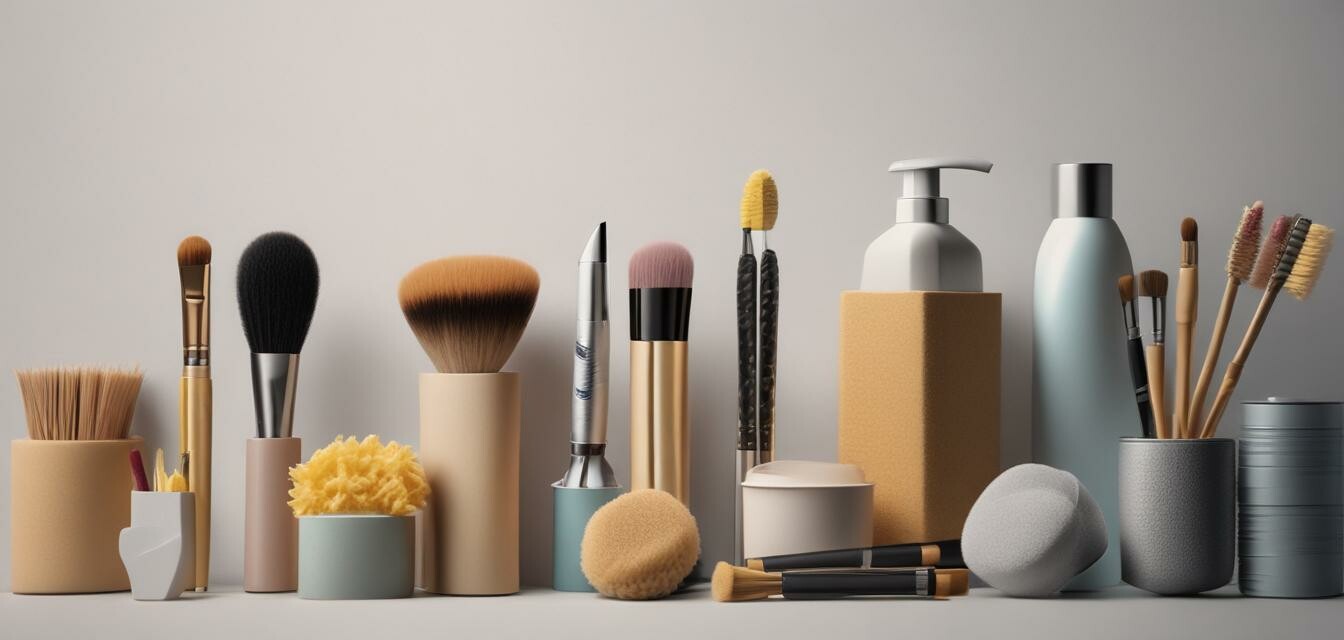
This article was generated using AI and is based on real customer reviews from the Amazon platform. It contains affiliate links, meaning we may earn a commission—at no extra cost to you. As Amazon Associates, we earn from qualifying purchases.
Common misconceptions about beauty tool cleaning
Key Takeaways
- Frequent cleaning of beauty tools prevents bacteria buildup.
- Using proper cleaning agents is crucial for maintaining tool integrity.
- Not all beauty tools require the same cleaning frequency.
- Informed cleaning practices can extend the lifespan of your beauty tools.
- Myths can lead to improper maintenance, resulting in ineffective beauty routines.
In the diverse world of beauty, achieving a flawless makeup look or keeping skincare tools in top condition often leads to various misconceptions, especially when it comes to cleaning beauty tools. Many users may unknowingly adopt incorrect cleaning practices that could hinder their beauty routines. In this article, we’ll dispel common myths about beauty tool cleaning and equip you with the factual insights you need to maintain your tools effectively.
1. Cleaning tools is unnecessary if they look clean
This is a pervasive myth. Just because your brushes or sponges appear clean doesn't mean they are. Bacteria and grime can remain on surfaces that aren't visibly dirty. It's vital to maintain a regular cleaning routine for all beauty tools, regardless of their appearance.
Why cleaning matters
Proper cleaning helps:
- Prevent infections and skin irritations.
- Ensure flawless application.
- Extend the lifespan of your tools.
2. All beauty tools can be cleaned the same way
Different tools require specific cleaning methods depending on their materials and usage. For example, makeup brushes often need gentle cleansing solutions, while sponges may benefit from soaking in warm, soapy water. Failing to adopt the right cleaning technique can damage your tools.
Cleaning methods for various tools
| Tool Type | Recommended Cleaning Method |
|---|---|
| Makeup Brushes | Use gentle soap or a makeup brush cleaner |
| Sponges | Soak in warm, soapy water and rinse thoroughly |
| Facial Rollers | Wipe with a soft cloth and a gentle cleanser |
| Nail Tools | Sanitize with alcohol or specialized tool cleaner |
3. You only need to clean tools before use
Cleaning beauty tools should be a regular part of your routine, not just done before use. Bacteria can accumulate over time, so it’s essential to clean your tools after each use. This ensures you’re starting fresh each time you apply your makeup or skincare products.
4. Harsh chemicals are better for cleaning
While it may seem logical that stronger products would be more effective, harsh chemicals can damage your beauty tools and irritate your skin. Opt for pH-balanced, gentle cleaning solutions designed for cosmetic tools. This will keep your tools in top condition while also protecting your skin.
5. Cleaning my tools is too time-consuming
This misconception often stems from underestimating how simple the cleaning process can be. Setting aside a few minutes after each use can save you time in the long run by preventing product buildup and maintaining optimal performance.
Tips for effective cleaning
- Establish a routine: Set a cleaning schedule (e.g., weekly) to keep your tools fresh.
- Use specialized cleaners: Invest in proper cleaning solutions for different tools.
- Air dry: Let your tools dry completely to prevent mold and bacteria growth.
- Storage: Store your tools in a clean, dry area away from direct sunlight.
Pros
- Promotes healthier skin.
- Enhances makeup application.
- Extends the life of beauty tools.
Cons
- Can be time-consuming if neglected.
- Requires purchasing specific cleaning products.
If you’re looking to improve your cleaning routine further, explore our Cleaning Tips category for expert advice and methods that can revolutionize how you care for your beauty tools.
Conclusion
Understanding the facts about beauty tool cleaning is essential to achieve the best results from your beauty routine. By debunking myths and adopting proper care practices, you can ensure that your tools not only look good but work effectively and safely. Regular maintenance is the key to extending the life of your beauty tools and keeping your skin radiant and healthy.